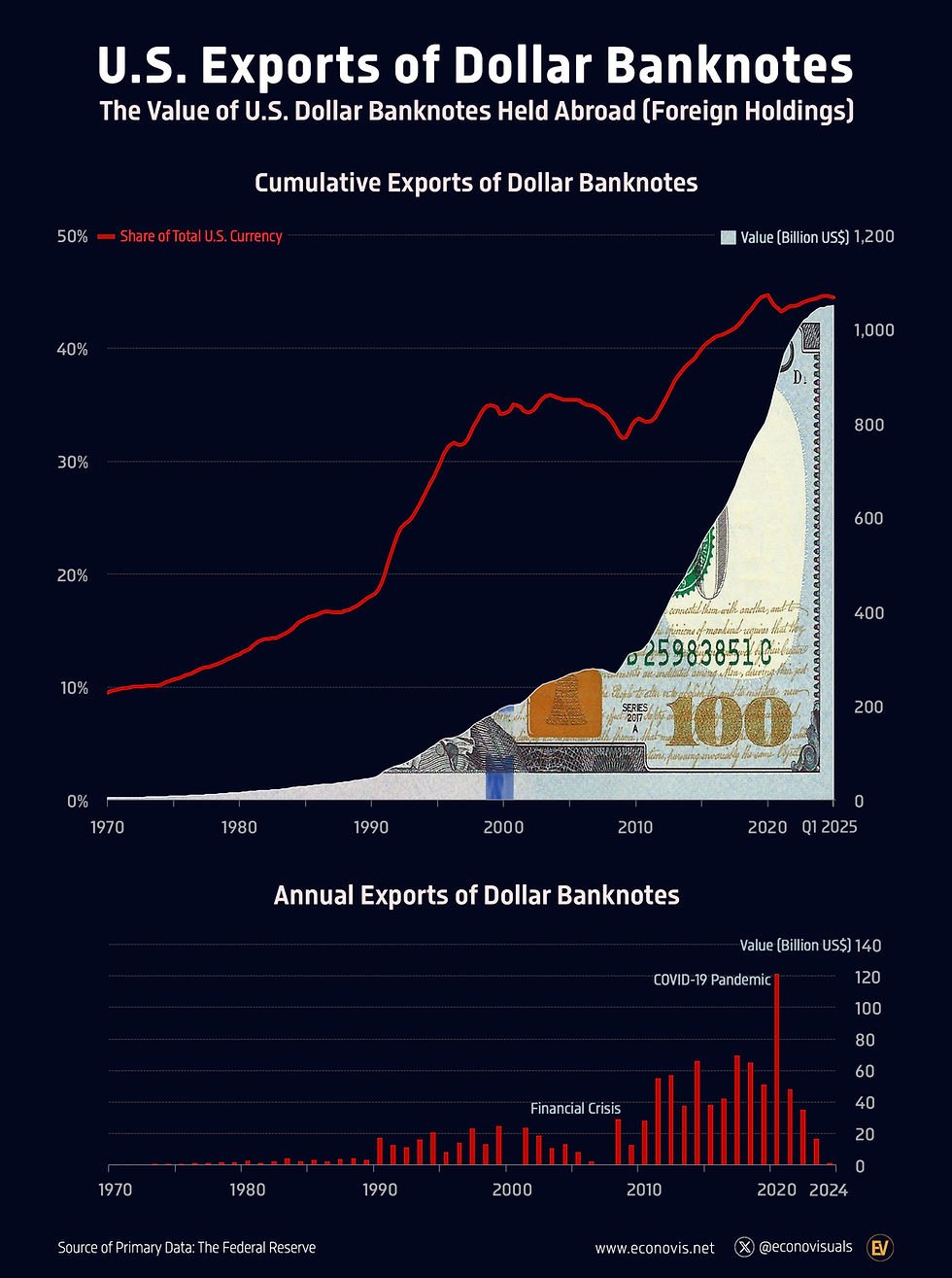U.S. Monetary Base (2007–2023)
- Admin

- Mar 7, 2024
- 1 min read
The monetary base is the sum of currency in circulation and required reserves held by banks and other depository institutions at the Federal Reserve.
The monetary base, often termed high-powered money, can expand through the money multiplier effect facilitated by the fractional reserve banking system. Comprising highly liquid assets such as notes, coinage, and current bank deposits, the monetary base constitutes a vital component of a nation’s money supply. When the Federal Reserve initiates the creation of new funds to purchase bonds from commercial banks, these banks experience a boost in their reserve holdings, leading to an expansion of the monetary base.
Amid the COVID-19 pandemic, spanning from January 2020 to January 2022, broad money (M2) increased by 40%, while the monetary base surged by 77%. Within the money supply, currency in circulation and reserve balances saw increases of 24% and 135%, respectively, during the same period. Specifically, from January 2020 to January 2022, broad money (M2) grew by $6.166 trillion, with currency in circulation and reserve balances expanding by $436 billion and $2,226 billion, respectively.
#USA #liquidity #moneysupply #moneyprinting #economy #markets #asset #equity #gold #spx #bitcoin #crypto #stocks #investing #investment #inflation





Comments